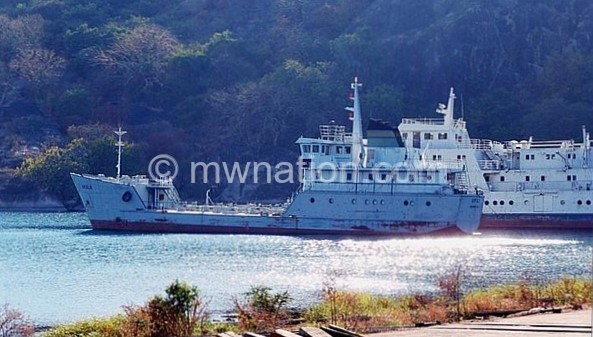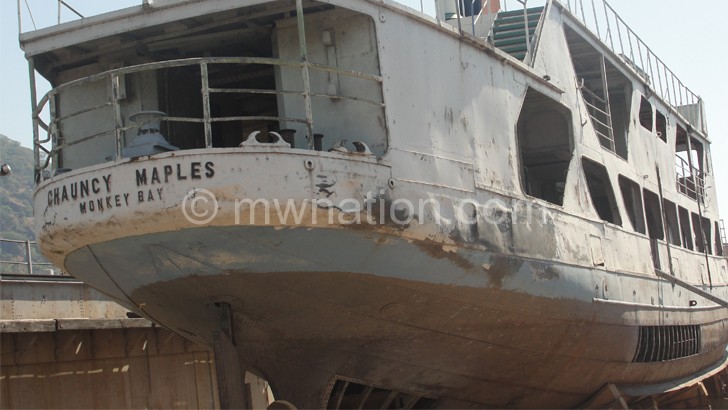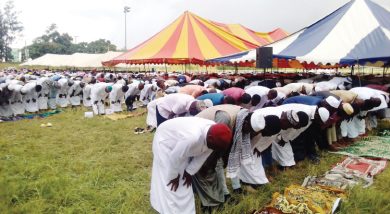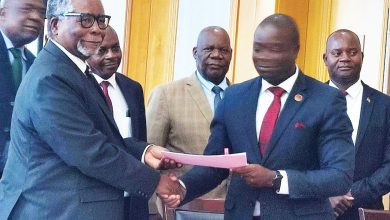Hidden gold in the old
Once upon a time, Malawi was blessed with several marine vessels (MVs). A steam powered boat MV Ilala was the first to sail on the fresh waters of the country in 1875.
Its commissioning opened up the water transport system on the lake to more vessels with the introduction of two other steam powered ships, Charles Janson in 1885 and Chauncy Maples in 1901.

Later, diesel powered ships came to the fore with MV Mpasa setting the new tone in 1936. MV Viphya, which capsized and sank near Chitimba in Rumphi to claim 145 passengers, was the second diesel ship ordered by the Nyasaland Railways in 1942.
The others are MV Ilala II, named after the first steamer, which was assembled and launched at Monkey Bay in 1951; Nkhwazi; Mtendere; Ufulu; and Thyolo, among others—at least according to the History of Likoma Island: 1800 to 2016 authored by Wilson Manjano Chirwa.
Today, some of these vessels are in sorry state at Monkey Bay Port in Mangochi while others were decommissioned from the lake way back in the years.

However, a tide is rising on recalling some of them for tourist attraction, especially those rich in history like MV Mpasa which was used as a prison in the independence struggle in 1959.
Member of Parliament for Nkhata Bay Central Ralph Mhone is the pacesetter in the crusade. He says government should turn to its aged marine vessels for tourist attraction as well as preservation of history.
Mhone says MV Mpasa is an example of the grounded vessels that could be the hidden gold in the tourism sector, adding that if only government would tow it to Nkhata Bay to complete a jigsaw puzzle in the story of the independence struggle, it would make history complete.
Mpasa vessel is said to be important in the history of Malawi. On March 3 1959, a State of Emergency was declared during which at least 200 hard core leaders of the Nyasaland African Congress (NAC) were detained.
In Nkhata Bay, NAC leaders were arrested and packed in Mpasa ready to be transferred to Mangochi and eventually to prisons such as Kanjedza, Chichiri and Gweru.
Historians say when their followers heard about this, they organised themselves and marched to the Nkhata Bay jetty, to demand the release of their leaders. The group comprised men, women, school children and teachers from surrounding villages and schools.
The protest led to the death of 31 unarmed civilians in the district—the highest number of casualties in the civil unrest that also occurred in Dowa, Chitipa, Karonga, Machinga, Mchinji and Nkhotakota where a number of Malawians were killed.
Government constructed Martyrs Memorial Pillar at Nkhata Bay jetty and Martyrs’ Memorial Garden at Kakumbi Village.
The pillar was placed at the site of the mass shootings of the 31 people while the Memorial Garden comprising symbolic tombstones was constructed at the site of the mass graves to honour these martyrs.
According to Minister of Civic Education, Culture and Community Development Patricia Kaliati, government oversees the upkeep of the two monuments by periodically maintaining them.
In 2009, she says K10 million was set aside to restore the monuments which included constructing a 54-metre long perimeter fence at the Memorial Garden and retaining stone walls at the jetty.
However, Mhone insists: “The memorial here at Nkhata Bay will never be complete until that steamer comes back where the events happened.”
He says the lakeshore district is losing out on tourism due to the missing link in the story of March 3 1959.
“When tourists come here, we tell them about 3rd March, we tell them about what happened at the jetty, we show them the memorial pillar, we take them to Kakumbi Memorial Gardens. What is missing in that jigsaw puzzle is the ship.
“It is the missing part in the tourism sector as well, especially when we want to tell tourists why Nkhata Bay is important vis-á-vis the independence struggle,” he says.
Mhone says he made the request to government and there was a promise to tow back the ship to Nkhata Bay.
Possibly, it is not just about Mpasa that could be turned into gold for tourism. The other ships like Chauncy Maples, Mtendere, Nkhwazi, Ufulu could also be restored for other uses.
For example, Chirwa in his book says Chauncy Maples was at one time in 2013 being restored for use as a floating medical clinic. The project was initiated by the Malawi government in 2009 with support from the Chauncy Maples Malawi Trust which was established in the United Kingdom in to raise two million pounds for the project.
“The floating medical clinic was to offer free treatment for common diseases, simple surgical operations and dentistry. However, the restoration was very slow such that by 2015 it was not clear whether the ship would be ready at all,” writes Chirwa.
Motal Engil became part of the project after the government handed over the ship to that company in 2010. There were discussions in 2015 between Motal Engil and the Trust on speeding up the project. Unfortunately, the project was discontinued in 2016, he adds.
Motal Engil spokesperson Thomas Chafunya says his institution wouldn’t competently comment on the issue because the vessels belong to government.
However, Ministry of Transport and Public Infrastructure spokesperson James Chakwera says it is the duty of the concessionaire to restore the idle marine vessels.





